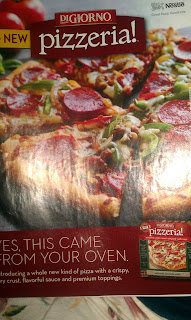Ah, media logs. While I will not miss you (not even a
little bit), I understand why you were necessary. Even if that meant you made
my life just a little harder. These logs and the media unit have both made me
more aware of how prevalent media is in everyday life. It has also taught me
that staying in my cocoon of homework and sleep has sheltered me from the incredible
volume of advertisements most people face constantly. I would definitely
consider myself more media literate, which is something I now find very
important. I think people tend to forget how easy it is to be manipulated, especially
when it’s someone’s job to manipulate you into buying what they are selling. Just
as it is their job to advertise, it’s my job to fully understand just what they
are trying to do. I would definitely consider myself more media literate, just
because we were lucky enough to have exposure to the techniques behind many
major advertisers. Many of us out there go are exposed to such media and never
fully understand it. Throughout this entire assignment and semester, I've had
to pay more attention to media and advertisements, even though that often meant
searching through more ads than I would usually for one that I thought was
suitable to analyze. The most interesting thing I discovered in the process was
how similar ads are. In most of my media logs, I talked about basically the
same thing. Even though media seems so different on the surface, everything is
a lot more similar than I ever realized.
Thank you, media logs, for revealing that to me.
Media literacy is important to prevent bamboozledness.
It grows increasingly easy to be dazzled by the trickery that is used in media,
and media literacy helps people see to the core of what we’re actually being
exposed to. There were a lot of times where I could not see the point of doing
a media log. By about the eighth one, I was on the verge of just becoming a
hermit so I would never have to worry about advertisements or the media. Sometimes
I still want that life, but the call to it is not as loud. You don’t have to like
being media literate to reap the benefits of being media literate. However,
commercials are forever ruined for me, because now I pay attention to the
common ad techniques being used and I don’t pay attention to the product. I
feel like that could be beneficial, but we’ll have to wait and see. Well, you
won’t see, because you won’t be incredibly entertained by my media blogs
anymore. It has been an interesting road, these media logs. Are they necessary?
Yes. Is that all that really matters in the end? Let me think about it.







